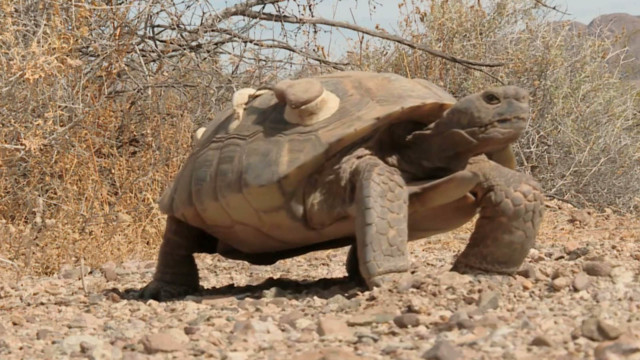Five years of drought in California have had devastating effects on its wildlife. One reptile that’s been deeply affected is the California Desert Tortoise. It’s struggling not only with dehydration, but also some unconventional predators.
Most scientists agree the effects of climate change are making matters worse. CGTN’s Frances Read reports.
As the sun comes up in California’s Sonoran Desert, it’s time to rise and shine for the wild tortoises that live there. Early morning is their only chance to feed before the intense summer heat becomes too much to bear. They may be one of the slowest moving creatures on the planet, but the battle for their survival is a race against time.
Teams of scientists are trying to make sure these threatened animals don’t become endangered. They outfit the tortoises with special tracking equipment, then keep a close eye on their health. Weighing and measuring are part of that, and so are X-rays.
Not all are so lucky. The harsh reality is empty shells in an unforgiving landscape. Back in the 1980s, there were some 30,000 tortoises living in the area. Today, they number only about 3,000.
These tortoises dig a complex network of burrows to try to keep themselves cool in the heat – and away from predators.
It’s not just tortoises that are struggling. California’s deserts have seen the worst drought for more than a thousand years, and if current trends continue scientists say 90 percent of some species’ habitats could disappear entirely. That’s even in protected National Parks like California’s Joshua Tree.
 CGTN America
CGTN America
